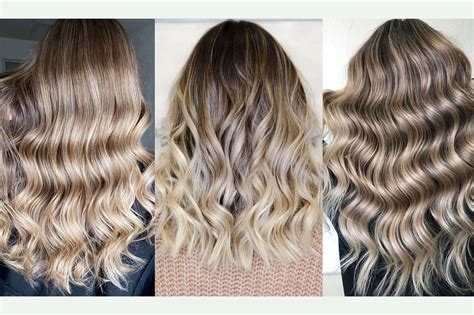Introduction

When it comes to hair coloring, there are endless options to choose from. Two of the most popular techniques are ombre and balayage. Both methods involve creating a gradual transition from one hair color to another, but they have key differences that make each technique unique.
What is Ombre?
Ombre (French for “shadow”) is a hair coloring technique that creates a horizontal gradient from one color to another. The transition can be subtle or dramatic, depending on the desired effect. Ombre hair is typically darker at the roots and gradually lightens towards the ends.
What is Balayage?
Balayage (French for “to sweep”) is a freehand hair coloring technique that uses a paintbrush to create soft, natural-looking highlights. The brush is used to gently sweep the highlighting agent onto the hair, creating a subtle blend of tones. Balayage hair often has a more diffused, less defined look than ombre hair.
Key Differences between Ombre and Balayage
| Feature | Ombre | Balayage |
|---|---|---|
| Gradient | Horizontal | Vertical |
| Application | From roots to ends | Freehand |
| Color Transition | Gradual or dramatic | Subtle |
| Look | Defined | Natural |
Advantages and Disadvantages of Ombre
Advantages:
- Creates a bold, striking look
- Requires less maintenance than balayage
- Can be customized to suit any hair color
Disadvantages:
- Can be difficult to achieve a natural look
- Requires precise placement of the color
- May not be suitable for all hair types
Advantages and Disadvantages of Balayage
Advantages:
- Creates a natural, sun-kissed look
- Requires less maintenance than ombre
- Can be customized to suit any hair color
Disadvantages:
- Can be time-consuming to apply
- May not be suitable for all hair types
- Can be difficult to achieve a bold, dramatic look
Which Technique is Right for You?
The best hair coloring technique for you depends on your individual preferences and hair type. If you’re looking for a bold, striking look that requires less maintenance, ombre may be a good option. If you prefer a natural, sun-kissed look with less defined highlights, balayage may be a better choice.
Maintenance for Both Techniques
Both ombre and balayage require regular maintenance to keep the color looking fresh and vibrant.
- Shampoo: Use a color-protecting shampoo to prevent fading.
- Conditioner: Use a deep conditioning treatment to hydrate and nourish the hair.
- Styling: Avoid using heat styling tools on high heat, as this can damage the color.
- Color Touch-Ups: Depending on your hair growth rate and the desired level of maintenance, you may need to get color touch-ups every 6-12 weeks.
Pain Points and Motivations
Pain Points:
- Cost: Both ombre and balayage can be expensive procedures, especially if you need multiple sessions.
- Time: Balayage can be a time-consuming technique, taking several hours to complete.
- Damage: Hair coloring can cause damage to the hair, especially if it is processed frequently.
Motivations:
- Personalization: Both ombre and balayage allow you to create a unique, personalized look that complements your individual style.
- Fashion: Ombre and balayage are both on-trend hair coloring techniques that can enhance your overall appearance.
- Self-Confidence: Having your hair colored professionally can boost your self-confidence and make you feel more attractive.
Innovative Ideas and Applications
Beyond traditional ombre and balayage techniques, there are many creative new ways to experiment with this trend:
- Reverse Ombre (Sombré): This technique inverts the ombre gradient, with the hair being darker at the ends and lighter at the roots.
- Balayage with Color Pop: Add a pop of bold color to your balayage highlights for a fun and unexpected twist.
- Ombré Bob: This style combines the ombre technique with a sleek bob haircut for a chic and modern look.
- Balayage with Shadow Root: This technique adds a subtle shadow at the roots, creating an illusion of depth and volume.
Step-by-Step Approach
Ombre
- Divide the hair into sections.
- Apply the darker color at the roots and blend it down towards the ends.
- Apply the lighter color to the ends and blend it up towards the roots.
- Comb the hair to create a smooth gradient.
Balayage
- Divide the hair into small sections.
- Paint the highlighting agent onto the sections using a freehand motion.
- Blend the highlights using a comb or brush.
- Continue painting and blending until you achieve the desired level of highlights.
Conclusion
Whether you choose ombre or balayage, these hair coloring techniques offer a versatile and customizable way to transform your look. By understanding the key differences, advantages, and disadvantages of each technique, you can make an informed decision that will best suit your individual preferences and hair type. Embrace the latest trends and enhance your beauty with the art of ombre and balayage.
